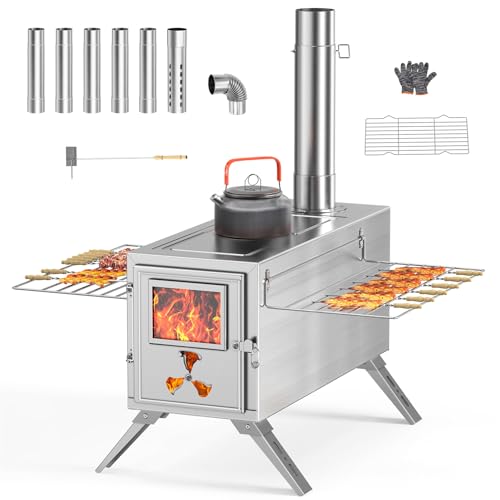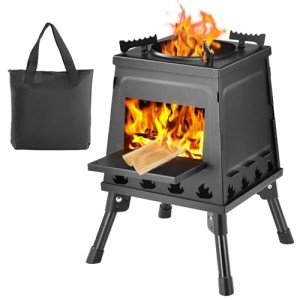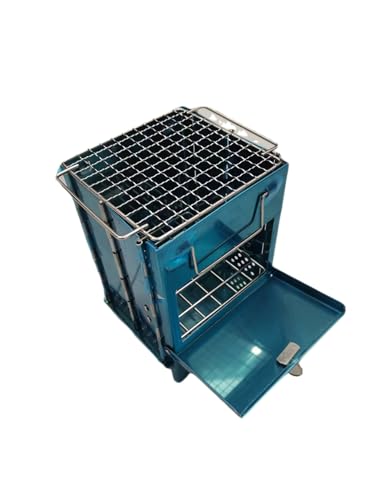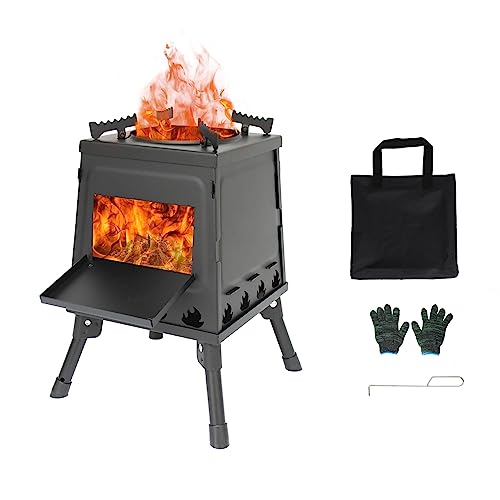Camping is an activity deeply ingrained in many cultures worldwide, embodying adventure, exploration, and a connection to nature. Among the various tools and gadgets that enhance the camping experience, the portable wood burning camping stove with chimney stands out as a game changer. This guide delves into the functionality, benefits, and considerations of owning a portable wood burning camping stove equipped with a chimney.
The Functionality of Portable Wood Burning Camping Stoves
A portable wood burning camping stove is designed to provide an efficient, sustainable cooking option for outdoor enthusiasts. Its chimney structure allows for improved airflow and smoke management, making it a safer and more functional choice for cooking in the wilderness.
Key Components of a Portable Wood Burning Camping Stove
-
Stove Body: Made of durable materials, the stove body is typically constructed from stainless steel or other heat-resistant metals to endure high temperatures.
-
Chimney System: This consists of a vertical pipe that channels smoke away from the cooking area. The chimney improves airflow, enhancing combustion and minimizing smoke in the cook’s face.
-
Cooking Surface: Many models come with a flat top or grate designed for pots and pans. Some may even have a larger cooking surface for cooking multiple items simultaneously.
-
Fuel Chamber: This is where users can load wood or other biomass materials. The design often allows for easy loading and management of fuel.
-
Ash Tray: To facilitate the cleanup process, stoves are usually equipped with an ash tray or compartment that collects ashes after combustion.
How It Works
To use a portable wood burning camping stove, campers typically:
-
Set Up: Position the stove on stable, fire-safe ground. Ensure the chimney is properly attached and in an upward position to direct smoke away.
-
Load Fuel: Add dry, seasoned wood to the fuel chamber. Avoid using green or wet wood, which can produce excessive smoke and lower combustion efficiency.
-
Ignite: Use fire starters or kindling to ignite the wood. Once the fire catches and starts to burn, the chimney will prompt a draft, helping to draw in more air for better combustion.
-
Cook: Place pots or pans on the cooking surface and begin meal preparation.
-
Clean Up: Once finished, allow the stove to cool, remove the ashes, and pack the stove back for travel.
Benefits of Using a Portable Wood Burning Camping Stove with Chimney
The advantages of using a wood burning camping stove with a chimney extend beyond simply cooking. Below are some compelling reasons why such stoves are becoming increasingly popular among campers and outdoor aficionados.
1. Eco-Friendliness
- Renewable Fuel Source: Wood is a renewable resource, particularly if obtained sustainably.
- No Dependency on Propane or Gas: This reduces the need for fossil fuels, making it an environmentally friendly choice.
2. Efficiency in Cooking
- High Heat Output: Wood burning stoves can produce significant heat, allowing for efficient cooking.
- Versatile Cooking Options: They can accommodate various cooking methods, from boiling to grilling.
3. Portability
- Lightweight Design: Most models are designed to be compact and easy to transport.
- Easy Setup: They can be quickly assembled and disassembled, making them ideal for travel.
4. Enhanced Safety
- Controlled Smoking: The chimney minimizes the likelihood of smoke inhalation, providing a greater degree of safety.
- Less Ground Impact: By using a contained stove rather than an open campfire, users minimize fire risk and damage to the environment.
Considerations Before Purchasing
While portable wood burning camping stoves with chimneys provide numerous benefits, potential buyers should consider several factors before making a purchase.
1. Size and Weight
- Compact Models: Ideal for backpacking trips where space and weight are critical.
- Larger Versions: Better suited for car camping with more stable setups.
2. Material Quality
- Durability: Stainless steel is common for its resistance to rust and corrosion.
- Thermal Insulation: Look for models with good insulation to maximize heat retention.
3. Ease of Use
- Loading Fuel: Ensure that the design allows for easy loading and ignition.
- Assembly Time: Some designs require intricate setup, while others can be easily put together.
4. Local Regulations
- Fire Restrictions: Be aware of the fire regulations in the camping area to avoid legal issues or safety hazards.
Frequently Asked Questions (FAQs)
1. Can I use my portable wood burning stove in all camping environments?
Answer: While many camping areas allow wood burning stoves, others may have specific regulations, especially during dry seasons. Always check local guidelines to ensure compliance.
2. What types of wood are best for burning?
Answer: Dry, seasoned hardwoods are ideal for burning because they produce more heat and less smoke compared to softwoods or wetlogs.
3. Is it easy to clean a portable wood burning camping stove?
Answer: Most portable wood stoves feature dedicated ash trays, making it fairly simple to dispose of ashes after use.
4. Can I cook directly on the stove?
Answer: Yes, most portable wood burning stoves come equipped with a cooking surface. Ensure you use appropriate cookware to avoid damage.
5. Are there any safety precautions I should take?
Answer: Always ensure that the stove is on stable ground, keep flammable materials at a safe distance, and follow the manufacturer’s instructions for use.
A portable wood burning camping stove with chimney is an invaluable tool for outdoor enthusiasts seeking efficiency, eco-friendliness, and versatility in their cooking. As camping continues to gain popularity, these stoves are redefining the outdoor culinary experience, allowing hikers, backpackers, and families to enjoy hearty meals in the heart of nature. By considering the benefits and keeping safety and usability in mind, campers can fully enjoy the advantages that come with a wood burning stove, making their outdoor adventures even more memorable.






